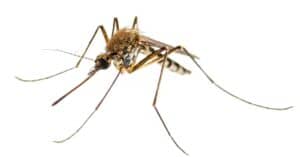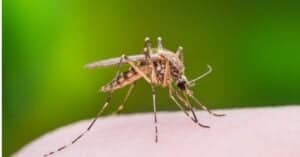Mosquitos are pests, and many believe they are nocturnal insects that feast on humans during the nighttime. Although this is true for some species, it is not valid for all. Some of these insects are active during the day, so are mosquitos nocturnal or diurnal? We did some in-depth research to determine whether mosquitos are nocturnal or diurnal. We explored the sleep behavior of mosquitos, and this is what we found.
The Sleep Behavior of Mosquitos Depends on Their Species
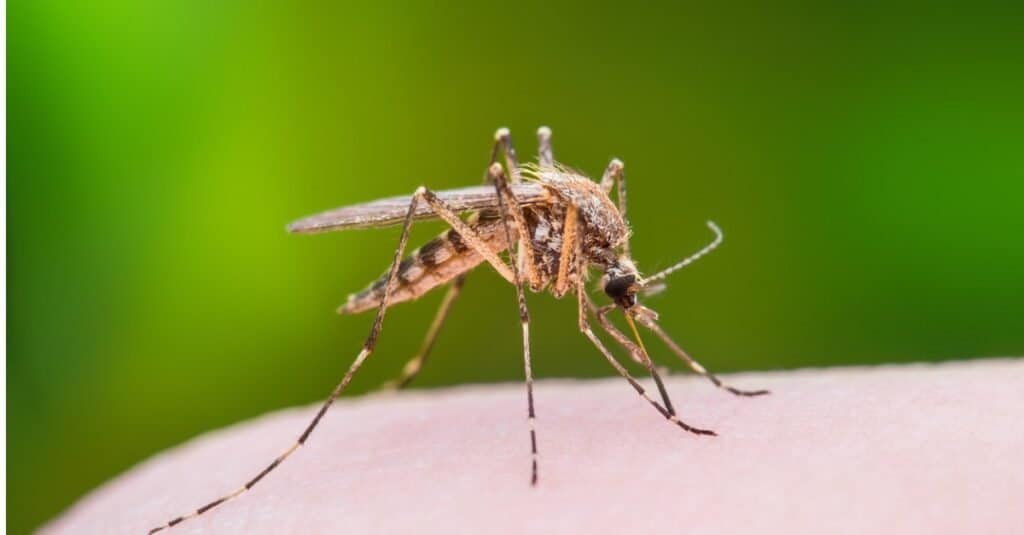
Mosquitos may be nocturnal, diurnal, or crepuscular, depending on their species.
©iStock.com/nechaev-kon
Mosquito activity levels vary significantly between species. Some are active during the day, others at night. Most species prefer being busy at dusk and dawn. A study by the University of California, Irvine, found that various types of mosquitos are attracted to and repelled by different light colors at separate times of the day. The most common mosquito species in the United States are the Aedes Aegyptus, culex pipiens, the common house mosquito, and Anopheles quadrimaculatus mosquito.
Aedes Aegyptus
Some mosquito species of the genus Aedes are diurnal. These mosquitos bite people aggressively during the day, especially in the morning and late afternoon. These mosquitos spread pathogens. They usually live along the southeastern and western coasts of the United States.
Culex Pipiens
Some mosquitos of the Culex genus are mainly nocturnal and carry West Nile virus pathogens. They are common in wet coastal areas from North Carolina to Texas and usually live in the Florida region.
Anopheles Quadrimaculatus
Anopheles mosquitos, responsible for spreading malaria to humans, are active at night, in the morning, and in the evening. These mosquitos commonly live in the eastern parts of North America. Malaria is not endemic to the United States, but knowing that you may be at risk when traveling is essential. About 2,000 cases of malaria are diagnosed each year in the United States. Most of these cases occur in travelers or immigrants from other countries.
Sleep Behavior of Mosquitos
Mosquitos sleep for 16 to 19 hours each day. When the mosquito is asleep, its hind legs droop, and its body gets closer to the surface where it is sleeping. Researchers at the University of Cincinnati discovered that sleep-disturbed mosquitos are more interested in catching up on sleep than searching for food the next day. The phenomenon of compensating for lost sleep, called sleep rebound, has also been observed in other animals, including honeybees, fruit flies, and humans.
In this experiment, the researchers examined three species of mosquitos. Each is responsible for transmitting diseases to humans. They are Aedes aegypti, Culex pipiens, and Anopheles stephensi. The researchers studied mosquitos’ sleeping and feeding behavior for about a week after they had become accustomed to their new experimental habitat.
In a second experiment, researchers initiated sleep deprivation by vibrating the enclosure at regular intervals throughout the day and at night during the usual resting time. More than 75% of non-sleep-deprived mosquitos sought a blood meal, but less than a quarter were interested in feeding after a sleepless night.
This behavior represents a 54-fold increase in feeding propensity in sleep-deprived mosquitos. Over-tired mosquitos are less likely to land on their hosts in laboratory and field settings. This behavior suggests that the same occurs in natural environments such as backyards.
Nocturnal or Not, Mosquitos May Have Changed Their Biting Behavior
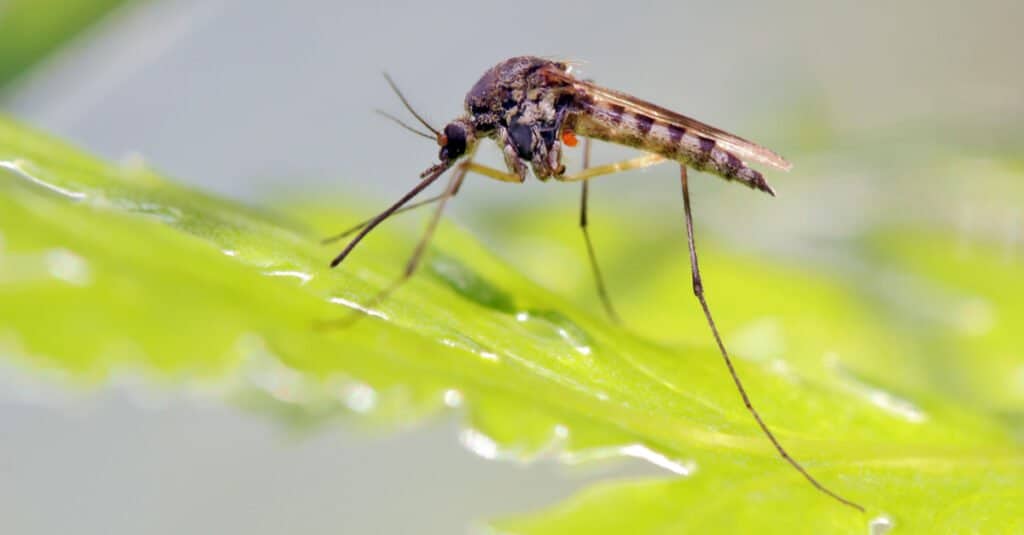
Mosquitos may postpone their feeding if they are over-tired, whether they are nocturnal, diurnal, or crepuscular.
©Achkin/Shutterstock.com
According to a Journal of Infectious Diseases study, some specific mosquito species no longer feast every night. Instead, they bite early in the morning. Researchers collected many mosquitos and recorded the time they caught them. In addition, they used morphology to identify the genus and PCR to determine the species. All the mosquitos they captured were Anopheles.
They tested the captive mosquitos for pyrethrin resistance and found nothing, which means all the mosquitos died. Because the mosquitos died, the researchers determined that all the following changes were exclusively behavioral. One of these behavioral changes was feeding time.
In just a few years, when mosquito nets were introduced in two villages, the scientists discovered that the local mosquitos dramatically changed the timing of their activity. Instead of biting people at 2 a.m. or 3 a.m., they now mainly bite people around 5 a.m.
When Are Mosquitos Not Active?
Most mosquitos don’t like to feed or fly when the sun is at its peak. Other species, on the other hand, do not bite at night when temperatures drop sharply, making them slower and more sluggish. Mosquitos are cold-blooded, so they pay special attention to temperature. They prefer warm and humid climates. When cold weather arrives, some species die off, and others hibernate.
The critical temperature threshold for many mosquitos is 50 degrees Fahrenheit. Mosquitos often emerge from hibernation when temperatures exceed 50 degrees Fahrenheit, and their winter eggs begin to hatch. Mosquitos are most active when temperatures are below 80 degrees Fahrenheit.
Higher temperatures can slow down the activity of these pests, as extreme heat can dry out mosquitos. They often go hunting as soon as the temperature starts to drop, which is usually at dusk. In the United States, mosquito activity varies with local temperature and climate, which can cause mosquito “booms” in various areas at different times. In some southern states, mosquito activity is uninterrupted. Still, mosquitos may only be seen for a short season in New England and the Pacific Northwest, from late spring to early fall.
Diurnal or Nocturnal Mosquitos May Be More Active When It Rains
You may think mosquitos are not active when it rains, as the water drops may prevent them from flying, but this is not entirely true. Mosquitos prefer warm, stagnant water. They lay their eggs in reservoirs and raise their young there. Amazingly, even when it rains, mosquitos don’t stop flying unless it’s heavy rain. In addition, rain often contributes to the humidity that mosquitos like, so these insects are happy to continue with their annoying feeding behavior. When the rain stops and a pool of water appears, mosquitos rush to take advantage of the pleasant conditions.
Different Light Colors Attract and Repel Mosquitos
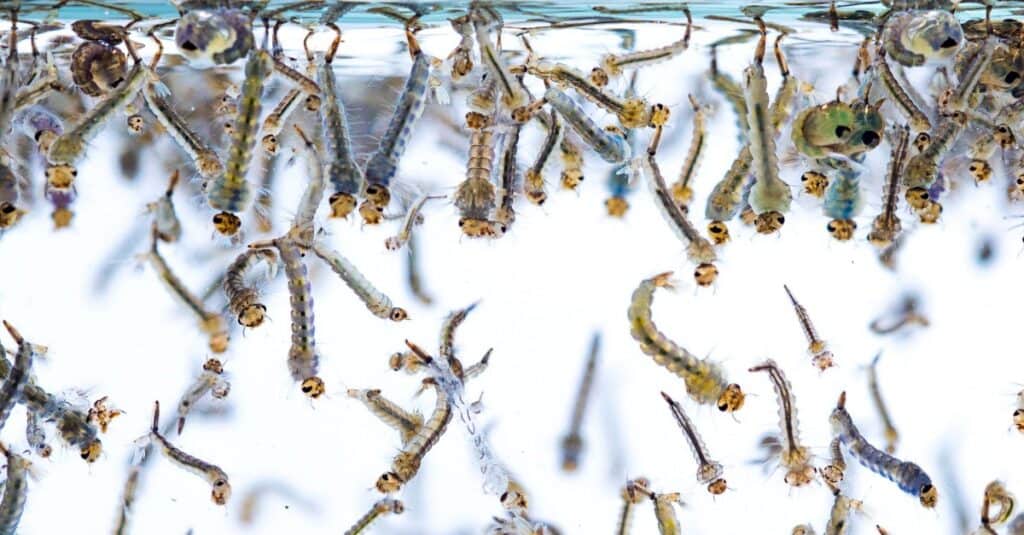
Mosquitos
lay their eggs
in warm, stagnant water.
©iStock.com/kitthanes
In a new study, researchers found that different light colors will attract or repel nocturnal and diurnal mosquito species, depending on their behavior at specific times of the day. Mosquitos are also one of the natural vectors of diseases affecting humans and animals worldwide. This finding has important implications for using light to combat mosquitos.
A team from the University of California, Irvine School of Medicine, investigated the Aedes aegypti, which bites during the day, and the Anopheles mosquito, which bites at night. They found different responses to ultraviolet and other colors of light between the two species. The researchers also found that light preferences depended on the sex and species of mosquitos, the time of day, and light color.
A broad spectrum of light during the day attracts many diurnal mosquitos. Nocturnal mosquitos are highly averse to short-wavelength light during the day. A new study shows that daytime mosquitos, especially females that need blood for their fertilized eggs, are attracted to light regardless of the daytime spectrum. In contrast, nocturnal mosquitos intentionally avoid ultraviolet (UV) and blue light during the day. Light is a significant regulator of circadian rhythms in these insects, inducing various behaviors at different times of the day.
Consequently, scientists can control harmful insects more effectively by understanding how they respond to shortwave light in species-specific ways. Scientists can also use this research to reduce the need for polluting and toxic pesticides. Instead, they can improve the ecosystem by creating new environmentally-friendly alternatives when controlling mosquitoes and other insect populations.
Nocturnal vs. Diurnal: What’s The Difference?
Navigate to Nocturnal vs. Diurnal: What’s The Difference? for further information about the nocturnal and diurnal phenomenon in various living creatures.
Up Next
- Zoonotic Diseases: 11 Animal-Borne Diseases You Should Know About
- What Would Happen if Mosquitos Went Extinct?
- Mosquitoes Lifespan: How Long Do Mosquitoes Live?
- 10 Plants Scientifically Proven to Repel Mosquitoes
The photo featured at the top of this post is © iStock.com/panom
Thank you for reading! Have some feedback for us? Contact the AZ Animals editorial team.



